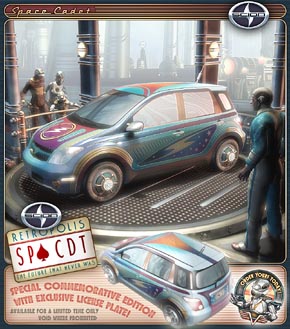
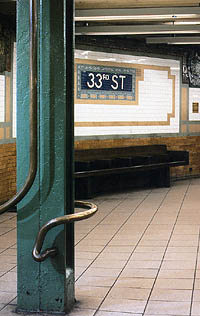 I ran across this book (Subway Style: 100 Years of Architecture & Design in the New York City Subway
I ran across this book (Subway Style: 100 Years of Architecture & Design in the New York City Subway ) while I was looking for reference material for a long term project of mine. I’m especially interested in subway stations up to about 1940, but it’s difficult not to get sidetracked by the wealth of images and information in Garn’s book.
) while I was looking for reference material for a long term project of mine. I’m especially interested in subway stations up to about 1940, but it’s difficult not to get sidetracked by the wealth of images and information in Garn’s book.
 For example, who knew how interesting the evolution of turnstiles would be? And since these stations have been in constant use for up to a century or more, their layout and design has repeatedly been adapted to new systems for ticket-taking, seating, vending, and just about anything else that happens in a subway station… by design, anyhow. This may make the mainly modern photographs in the book problematic for me, but
For example, who knew how interesting the evolution of turnstiles would be? And since these stations have been in constant use for up to a century or more, their layout and design has repeatedly been adapted to new systems for ticket-taking, seating, vending, and just about anything else that happens in a subway station… by design, anyhow. This may make the mainly modern photographs in the book problematic for me, but 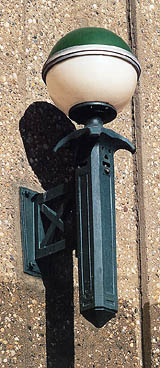 if anything it makes them even more interesting to explore. Still there are quite a lot of period photos and some great graphics used to advertise the subway and its destinations over the years.
if anything it makes them even more interesting to explore. Still there are quite a lot of period photos and some great graphics used to advertise the subway and its destinations over the years.
I could wish for more examples of mosaic and ceramic work, I guess – we do face the problem today that we can’t take our own reference photographs in the stations – but that’s due to the material I’m looking for. It’s certainly not a failure of the book itself.
At right is a detail I especially like – a modern addition to the Roosevelt Island Station, it uses forms that date back to a 1930 design in order to blend in with the existing fixtures of the IND line.
Here it is. Go forth and browse.
This entry was posted on Thursday, August 9th, 2007
and was filed under Reading / Watching / Consuming
There have been no responses »
 If you read my earlier blog entry you’ll have seen how my Saga Shirts site transmogrified over time from a site where I sold silk screened shirts to a print-on-demand based site – once I found a company that could do very good quality digital printing directly onto black and dark colored shirts. They’re Printfection, and they rock.
If you read my earlier blog entry you’ll have seen how my Saga Shirts site transmogrified over time from a site where I sold silk screened shirts to a print-on-demand based site – once I found a company that could do very good quality digital printing directly onto black and dark colored shirts. They’re Printfection, and they rock.
And as soon as I’d wrapped up the new Saga Shirts site, I wanted to use them with another kind of design that’s near and dear to me – my “Future That Never Was” of Retropolis, a land of personal rocket ships and Faithful Robot Companions – the sort of future that once seemed inevitable to us 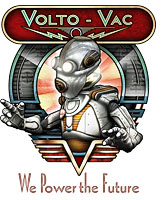 because we were reading too many Buck Rogers comics and pulp magazines, reinforced by the fact that industrial designers were now streamlining everything – from locomotives and airplanes, where it makes sense, to clocks and refrigerators, where, just possibly, it doesn’t. I love that stuff. Especially when it doesn’t make sense.
because we were reading too many Buck Rogers comics and pulp magazines, reinforced by the fact that industrial designers were now streamlining everything – from locomotives and airplanes, where it makes sense, to clocks and refrigerators, where, just possibly, it doesn’t. I love that stuff. Especially when it doesn’t make sense.
(more…)
This entry was posted on Monday, August 6th, 2007
and was filed under Print On Demand, Works in Progress
There has been 1 Response »
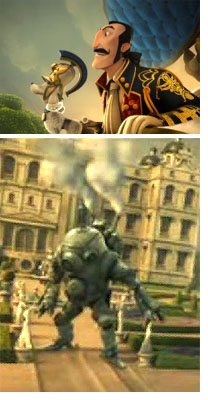 Blur Studio continues its progress from an in-game animation house through short films and, ultimately, to features with “A Gentleman’s Duel” – an eight minute 3D animated short in which a Frenchman and an Englishman vie for the superbly endowed favors of a noblewoman and, one assumes, her equally well endowed estate. It’s built like a brick mansion.
Blur Studio continues its progress from an in-game animation house through short films and, ultimately, to features with “A Gentleman’s Duel” – an eight minute 3D animated short in which a Frenchman and an Englishman vie for the superbly endowed favors of a noblewoman and, one assumes, her equally well endowed estate. It’s built like a brick mansion.
Matters quickly get out of control as they begin a duel in their Steampunk robotic combat suits. Mayhem ensues.
This short also marks Blur’s transition to Softimage software – they’ve long been a 3DS Max house – and the film became a testbed for their work with that software. It’s not 100% Softimage, but they’ve obviously done a fine job integrating Softimage into their pipeline.
This is Blur Studio‘s fifth ambitious short film. They’ve already collected one Oscar nomination for their earlier works.
This entry was posted on Sunday, August 5th, 2007
and was filed under Computer Graphics, Found on the Web
There have been no responses »
 |
My own combination of Celtic Art and Retro-Futuristic Design is such an unlikely mix that I don’t think it ever occurred to me that anyone else would try the same recipe – till I discovered the brilliant castings of Cornwall’s Design Clinic.They have an eclectic line of fifties style items inspired by autos of that period, some whiz-bang Buck Rogers retro-futurism, and a wide selection of Celtic art designs that range from clocks to boxes to skulls.
One of my own favorites is the chrome finished, car grill styled coat hooks set. But, as always, your mileage may vary.
|
 |
This entry was posted on Thursday, August 2nd, 2007
and was filed under Found on the Web
There have been 2 Responses »
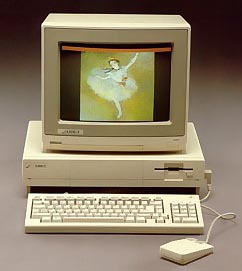 The Latin-literate technophiles at Ars Technica have posted the first installment in what looks to be a very complete history of the Amiga, which in 1985 was the most advanced graphics and sound computer on the market. The engineers who designed it and the software developers who supported it made the machine an ideal entry point into computer graphics for artists and animators.
The Latin-literate technophiles at Ars Technica have posted the first installment in what looks to be a very complete history of the Amiga, which in 1985 was the most advanced graphics and sound computer on the market. The engineers who designed it and the software developers who supported it made the machine an ideal entry point into computer graphics for artists and animators.
Anything I’ve managed to do with computer graphics is owed to those days and to those developers.
From the very outset the article concentrates on that central conflict between creative people and businessmen which was eventually to kill both the Amiga and the company that had purchased it, only to run it into the ground. It makes good reading.
This entry was posted on Wednesday, August 1st, 2007
and was filed under Computer Graphics
There have been no responses »
The Espresso Book Machine prints complete paperback books at rates up to one every sixty seconds – complete interior pages in black and white with full color, perfect bound covers. You can even see it in action.
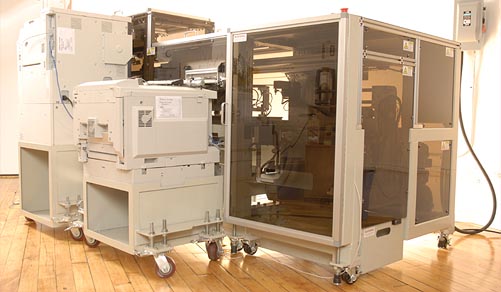
At a million dollars apiece I doubt that you or I will be setting one up in the basement. The machines are intended for use by libraries and retailers, who can offer inexpensive but commercial quality books to you, on demand. Because there are already large collections of public domain digital books – more all the time – it’s possible that in the future no book will ever need to be unavailable. “Out of print” may become a meaningless phrase.
Machines are already in place at the library of Alexandria in Egypt (nice touch!) and in Washington DC, at the World Bank InfoShop. Another has just been installed at the New York Public Library’s Science, Industry and Business Library. More are headed to libraries in New Orleans, San Francisco, and other cities in the U.S. and Canada.
Libraries – like bookstores – have limited shelf space. And although it goes against my own idea of what a library should be, they commonly discard books that aren’t popular. A system like this one can ensure that books can be made available even if they’re not kept on the shelves.
On the commercial side, a bookstore could use these machines to produce public domain books on demand and even copyrighted books, under license, so that any book could potentially be available at any time. It’s a pretty exciting thing.
This reminds me of an idea I had about fifteen years ago – although that thought was about clothes, not books. If a retailer had a large selection of patterns available and a 3D scanner you could walk into a shop, have your body scanned, and pick the clothing style and material you wanted. Tailor-fit clothes could be then made for you at a nearby – or distant – workshop. No kind of clothing would ever have to be unavailable, and anything you bought would fit you perfectly. You could get a pair of custom fit khakis and a nineteenth century frock coat at the same place, at the same time. I’m still waiting for that one.
But when it comes to the books, anyway, I think this is a terrific development. The only snag I can foresee is that in the decades to come, any book that’s been published in electronic form with DRM may not be easily reproduced even after it falls into the public domain – because DRM, unlike copyright, is forever.
This entry was posted on Tuesday, July 31st, 2007
and was filed under Print On Demand
There have been no responses »
Heres‘ my entry – possibly my first entry – in the “Skin a Scion” contest at Deviant Art.
True to form, I ended up skinning the world around the car, too. Win or lose, I think I’ll end up retooling the scene after the contest, with one of my own vehicles. Something you’d expect to see coming out of the Retropolis Rocket Works.
This entry was posted on Sunday, July 29th, 2007
and was filed under Computer Graphics, Works in Progress
There has been 1 Response »
 I’ve always loved books, and I do mean always; I learned to read at such an early age that I can’t remember doing it, or a time when I couldn’t read. That’s very different from the way I learned to talk, but trust me – that’s another story.
I’ve always loved books, and I do mean always; I learned to read at such an early age that I can’t remember doing it, or a time when I couldn’t read. That’s very different from the way I learned to talk, but trust me – that’s another story.
In fact when I was young I always believed that I was going to be a writer. It just didn’t work out that way.
I started using traditional Celtic knotwork designs in my drawings and paintings back in 1980. During the 80s I continued that and eventually began to invent new patterns of my own. Then at some point in the early 90’s, I stopped. I think it was because I was getting so typecast as “the Celtic Art Guy” that it was annoying, and I figured I ought to show my chops in some other kind of art. But also, I probably wanted to explore something a bit different just to suit myself.
(more…)
This entry was posted on Saturday, July 28th, 2007
and was filed under Print On Demand, Works in Progress
There have been no responses »
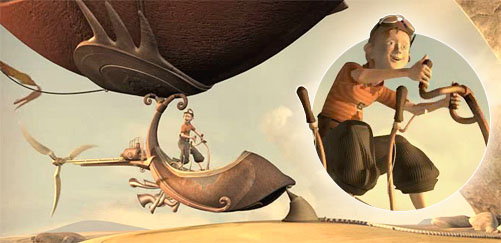
“Stilt Walkers” is a beautiful, four minute student film by Alexis van der Haeghe of Belgium. It reminds me of those old days when I’d zoom across California in my art nouveau airship, investigating the clouds and having adventures. Except that I didn’t do that, of course.  But watching this boy have his own adventures sure makes me wish I had, and I almost feel like I did.
But watching this boy have his own adventures sure makes me wish I had, and I almost feel like I did.
Clad in an aviator’s helmet and plus-fours, the boy is clearly having the time of his life until he encounters a pair of comedia-del-arte style giants on towering stilts. Complications ensue, all in fine style. Highly recommended.
The artist has since done some work on a movie trailer and a CD, but seems to be working away, at the moment, on a children’s book. A personal project – glad to see that. I’m always interested in what we can do when we’re not bound by what someone else thinks they can profit from.
This entry was posted on Wednesday, July 25th, 2007
and was filed under Computer Graphics, Found on the Web
There have been no responses »
 All right, first things first. Why the heck would you want to put your DNA in a necklace?
All right, first things first. Why the heck would you want to put your DNA in a necklace?
1. A gift for your spouse so that he/she/it can clone you, if things go badly at the office tomorrow.
2. A chance to sprinkle your own DNA very far away from the crime scene. In a way that conclusively proves you weren’t there at the relevant time.
3. A little memory aid, just in case you experience a vacant moment in the middle of reciting your chromosome pairs. If this is you, please don’t come to that party on Saturday.
 Or.. something. Anyway, since we’ve established your motive (you can tell that I’m all about the second reason) the vampirewear.com web site offers you detailed and, for all I know, accurate instructions on how to sample, isolate and contain your own DNA – all so they can sell you a stylish vial to keep it in. See? Stylin’.
Or.. something. Anyway, since we’ve established your motive (you can tell that I’m all about the second reason) the vampirewear.com web site offers you detailed and, for all I know, accurate instructions on how to sample, isolate and contain your own DNA – all so they can sell you a stylish vial to keep it in. See? Stylin’.
This nugget of academic dementia was thrown through the Secret Laboratory’s skylight by Jean Roth.
This entry was posted on Monday, July 23rd, 2007
and was filed under Found on the Web
There have been no responses »

 I ran across this book (Subway Style: 100 Years of Architecture & Design in the New York City Subway
I ran across this book (Subway Style: 100 Years of Architecture & Design in the New York City Subway) while I was looking for reference material for a long term project of mine. I’m especially interested in subway stations up to about 1940, but it’s difficult not to get sidetracked by the wealth of images and information in Garn’s book.
 For example, who knew how interesting the evolution of turnstiles would be? And since these stations have been in constant use for up to a century or more, their layout and design has repeatedly been adapted to new systems for ticket-taking, seating, vending, and just about anything else that happens in a subway station… by design, anyhow. This may make the mainly modern photographs in the book problematic for me, but
For example, who knew how interesting the evolution of turnstiles would be? And since these stations have been in constant use for up to a century or more, their layout and design has repeatedly been adapted to new systems for ticket-taking, seating, vending, and just about anything else that happens in a subway station… by design, anyhow. This may make the mainly modern photographs in the book problematic for me, but  if anything it makes them even more interesting to explore. Still there are quite a lot of period photos and some great graphics used to advertise the subway and its destinations over the years.
if anything it makes them even more interesting to explore. Still there are quite a lot of period photos and some great graphics used to advertise the subway and its destinations over the years.

















